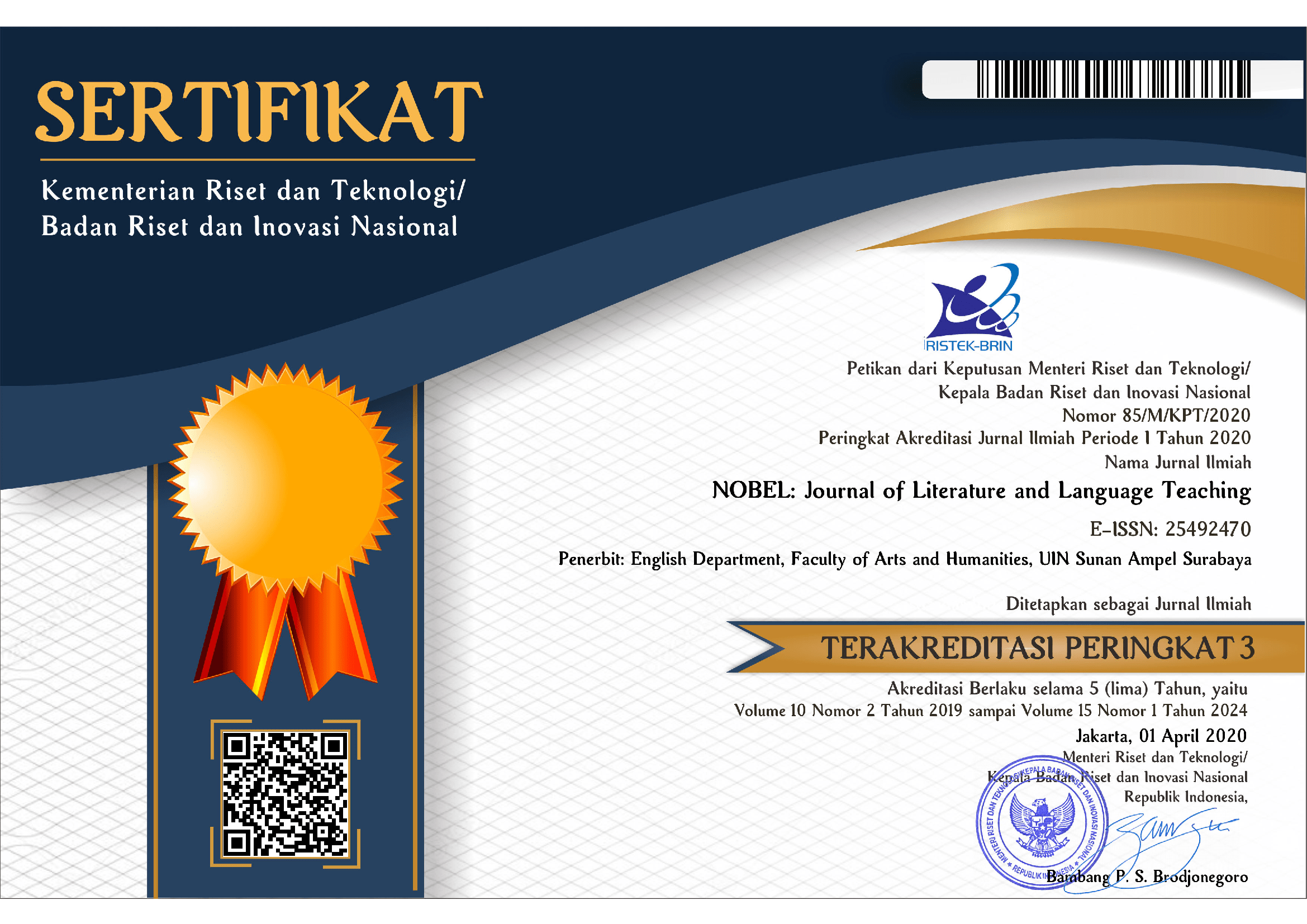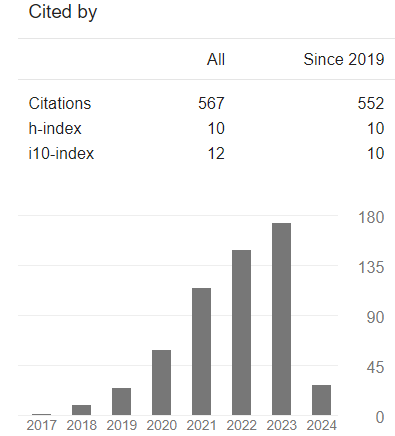Esther Greenwood's Distaste of Life as Seen in Sylvia Plath's The Bell Jar
DOI:
https://doi.org/10.15642/NOBEL.2017.8.1.9-21Keywords:
distaste of life; unconscious mind; defense mechanismAbstract
This study attempts to analyze the causes and the effect of Esther Greenwood's distasteful feelings. The aims of this study are to understand what makes Esther has distaste of life including toward men, her friends, her mother and the general social's perspectives. It also explains the effect of Esther's distaste. This study uses descriptive qualitative method. Things that will be done are describing the causes and effect of Esther's distaste using Sigmund Freud's psychoanalysis. After analyzing the data, the result shows that Esther Greenwood has distaste for her life because of her unconscious mind. She got a lot of influences from her bad experiences including the time she spent with her ex-boyfriend, her mother, her friends, and also her opposite views toward the social perspectives. Then, the effect of Esther's distaste is that she tends to use defense mechanisms such as denial, fantasy, reaction formation, rationalization, repression, displacements, sublimation, undoing, and acting out, every time her distasteful feelings show up
Downloads
References
Bargh, J. A. & Morsella, E. (2008). Perspectives on Psychological Science: A Journal of the Association for Psychological Science: The Unconscious Mind. Retrieved September 10, 2016 from http://www.ncbi.nlm.nih.gov/pmc/articles/pmc2440575
Baumeister, R. F., Dale, K., & Sommer, K. L. (1998).Freudian Defense Mechanisms and Empirical Findings in Modern Social Psychology: Reaction Formation, Projection, Displacement, Undoing, Isolation, Sublimation,and Denial. Case Western Reserve University.
Calderon, S. (n.d.). The SIS Times: How Would an Ideal Life Be. Retrieved September 10, 2016 from http://www.sistimes.weebly.com/how-would-an-ideal-life-be.html
Cloninger, S.C. (2004). Theories of Personality: Understanding Persons (4thedition).New Jersey: Pearson Prentice Hall.
Cramer, P. (2009). Seven Pillars of Defense Mechanisms Theory. Retrieved September 10, 2016 from http://www.psychomedia.it/rapaport-klein/cramer09.pdf
Ewen, R.B. (2014).An Introduction to Theories of Personality (7thedition). New York and London: Taylor & Francis Group.
Feist, J. & Feist, G.J. (2008). Theories of Personality (7th edition). New York: McGraw-Hill Companies.
Plath, S. (1963). The Bell Jar. London: William Heinemann Limited.
Rajeevan, E. (2010). Yoga and Psychoanalysis: The Dynamics of Transcending the Present. Retrieved September 10, 2016 fromhttp://hdl.handle.net/10603/2569
Ryckman, R. M. (2008). Theories of Personality (9th edition). New York: Thomson Wadsworth.
Schultz, D. P. & Schultz, S. E. (2005). Theories of Personality (8thedition). New York: Wadsworth Cengage Learning.
Simma, W. (2009). An Analysis of Defense Mechanisms Used by the Main Characters in Mark Twain’s The Adventures of Huckleberry Finn and The Prince and ThePauper.Master of Arts degree in English at Srinakharinwirot University.







